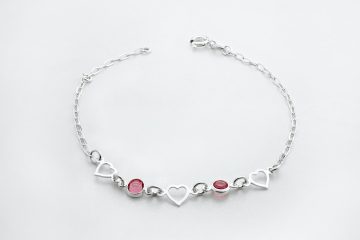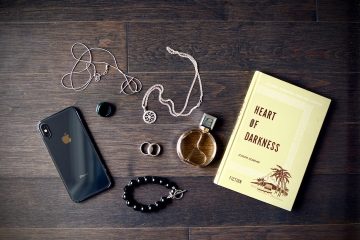Introduction
Bracelets have been worn by people for centuries as a way to express their style and adorn their wrists. From delicate chains to chunky statement pieces, bracelets come in a variety of styles and materials, catering to different tastes and preferences. However, one crucial aspect that often gets overlooked is finding the right bracelet size. A bracelet that is too tight can be uncomfortable, while one that is too loose might slip off or get caught on objects. In this comprehensive guide, we will delve into the intricacies of understanding the average bracelet size and provide you with practical tips to help you find the perfect fit.
Factors to Consider when Determining Bracelet Size
1. Wrist Measurements
The first step in finding the ideal bracelet size is to measure your wrist accurately. To do this, you will need a flexible measuring tape or a piece of string and a ruler. Wrap the measuring tape or string around the widest part of your wrist, just below the hand bone. Make sure it is snug but not too tight. Note down the measurement in inches or centimeters.
2. Personal Preference
Apart from wrist measurements, personal preference plays a significant role in choosing the bracelet size. Some individuals prefer a snug fit, while others like a looser style. Consider the level of comfort you desire and the activities you engage in regularly. For example, if you lead an active lifestyle, you may prefer a slightly looser fit to allow for movement.
3. Bracelet Type
Different bracelet types have different fit requirements. For instance, a stretch bracelet made of elastic material can fit a range of wrist sizes due to its flexibility. Conversely, a bangle bracelet is typically rigid and needs to be wide enough to slide over the hand. Understanding the specific requirements of the bracelet type you are interested in can help you determine the appropriate size.
4. Clasp or Closure Style
The clasp or closure style of a bracelet also affects its fit. Some bracelets have adjustable closures, such as lobster clasps or extender chains, allowing for flexibility in sizing. Others may have fixed closures like toggle clasps or box clasps, meaning you need to ensure the bracelet length is suitable for your wrist. Consider the type of closure and its adjustability when selecting a bracelet.
Average Bracelet Sizes for Different Wrist Measurements
Now that we have discussed the factors to consider, let’s explore the average bracelet sizes for different wrist measurements. Keep in mind that these are general guidelines, and individual preferences may vary.
1. Extra Small (XS)
Wrist Measurement: Up to 5.5 inches (14 cm)
If your wrist measures up to 5.5 inches, you fall into the extra small category. Bracelets in this size range are typically designed for petite wrists and may appear dainty and delicate. Look for bracelets with a length of around 6 to 6.5 inches, accounting for a slight drape.
2. Small (S)
Wrist Measurement: 5.5 to 6 inches (14 to 15 cm)
Small-sized wrists fall in the range of 5.5 to 6 inches. Bracelets for this wrist size should measure approximately 6.5 to 7 inches, allowing for a comfortable fit with a little room for movement.
3. Medium (M)
Wrist Measurement: 6 to 6.5 inches (15 to 16.5 cm)
If your wrist measures between 6 and 6.5 inches, you have a medium-sized wrist. Bracelets for this size should have a length of around 7 to 7.5 inches to ensure a proper fit.
4. Large (L)
Wrist Measurement: 6.5 to 7 inches (16.5 to 18 cm)
Wrist measurements ranging from 6.5 to 7 inches are considered large. Bracelets for this size should measure approximately 7.5 to 8 inches, providing enough room for a comfortable fit.
5. Extra Large (XL)
Wrist Measurement: 7 inches and above (18 cm and above)
If your wrist measures 7 inches or above, you fall into the extra-large category. Look for bracelets with a length of 8 inches or more to ensure a comfortable fit without being too tight.
Tips for Finding the Perfect Fit
Now that you have an understanding of average bracelet sizes, here are some helpful tips to assist you in finding the perfect fit:
1. Try Before You Buy
Whenever possible, try on the bracelet before making a purchase. This allows you to assess the fit, comfort, and overall appearance on your wrist. If you are buying online, check the seller’s return policy to ensure you can exchange the bracelet if it doesn’t fit as desired.
2. Consider Adjustable Styles
Opting for bracelets with adjustable closures, such as those with extender chains or adjustable clasps, can provide flexibility in sizing. These styles allow you to customize the fit according to your wrist measurements and personal preference.
3. Seek Professional Assistance
If you are unsure about your wrist measurements or need guidance in choosing the right bracelet size, consider visiting a jewelry store or consulting with a professional jeweler. They will have the expertise to measure your wrist accurately and recommend suitable bracelet sizes.
4. Account for Bracelet Width
Keep in mind that wider bracelets will fit more snugly than narrower ones. If you prefer a looser fit, consider selecting a slightly longer bracelet to compensate for the additional width.
5. Layering Bracelets
If you enjoy layering multiple bracelets, consider selecting sizes that complement each other. Mix and match different widths and styles to create a cohesive and visually appealing look.
Conclusion
Finding the perfect bracelet size is crucial for both comfort and aesthetics. By considering factors such as wrist measurements, personal preference, bracelet type, and closure style, you can ensure a comfortable and well-fitting bracelet. Remember to try on bracelets before buying, consider adjustable styles, seek professional assistance if needed, account for bracelet width, and have fun experimenting with layering bracelets. With these tips in mind, you are well on your way to finding the ideal bracelet size for your wrist.
Frequently Asked Questions (FAQs)
Q1. Can I measure my wrist using a piece of string?
Yes, you can use a piece of string to measure your wrist. Simply wrap the string around your wrist, mark the point where it overlaps, and then measure the length with a ruler.
Q2. What if my wrist measurement falls between two size categories?
If your wrist measurement falls between two size categories, it is generally recommended to choose the larger size for a comfortable fit. However, personal preference and the bracelet type can also influence your decision.
Q3. Can I adjust the size of a bracelet myself?
Some bracelets, particularly those with adjustable closures, can be resized at home with basic tools. However, it is advisable to consult a professional jeweler for complex resizing or intricate designs to avoid any damage to the bracelet.
Q4. Are there any standard bracelet sizes for men and women?
While there are general guidelines for average bracelet sizes, these can vary for men and women. Men’s bracelets typically have larger sizes compared to women’s bracelets.
Q5. How should a bracelet fit on my wrist?
A bracelet should fit comfortably on your wrist, allowing a bit of movement but not sliding off easily. It should neither be too tight nor too loose. Aim for a fit that feels secure and comfortable for everyday wear.




